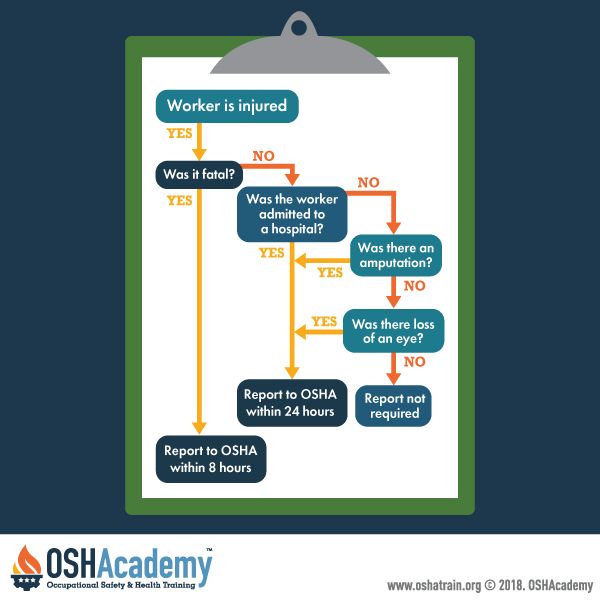Gathering the Facts
What is an Accident?
An accident is the final event in an unplanned process that results in injury or illness to an employee and possibly property damage. It is the final result or effect of a number of surface and root causes.
- An 'event' occurs when one 'actor' (one person or thing) performs an 'action' (does something).
- A person or thing (equipment, tools, materials, etc.) does something that results in a change of state.
- An accident may be the result of many factors (simultaneous, interconnected, cross-linked events) that have interacted in some dynamic way.
Reporting Accidents to OSHA
If your company is in the private sector, and a serious accident or fatality occurs, you may be required to report it to your State or Federal OSHA office.
OSHA Standard 1904.39, Reporting fatalities, hospitalizations, amputations, and losses of an eye as a result of work-related incidents to OSHA, details the specific requirements.
Basic Requirements
Within eight (8) hours after the death of any employee as a result of a work-related incident, you must report the fatality to the Occupational Safety and Health Administration (OSHA), U.S. Department of Labor.
Within twenty-four (24) hours after the inpatient hospitalization of one or more employees or an employee's amputation or loss of an eye as a result of a work-related incident, you must report the inpatient hospitalization, amputation, or loss of an eye to OSHA.
In June 2020, a serious workplace incident occurred at a manufacturing facility in Ohio. A batch operator was injured while working on a concrete mixer with a pneumatic discharge door. The door was designed to remain open when pneumatic energy was released via an exhaust valve, but the handle of this valve had broken off and had not been repaired.
Due to the inoperative valve, the operator attempted to close the door manually. It shut unexpectedly, causing a severe head injury. The operator was transported to the hospital and died five days later.
A federal investigation found that the company had not addressed the equipment issue. It pled guilty to a workplace safety violation, received the maximum fine of $500,000, and was placed on two years’ probation with a required Safety Compliance Plan.
This case highlights the role of timely and accurate reporting in preventing serious incidents:
- Equipment defects - especially involving safety controls—must be reported and escalated immediately.
- Near misses and unsafe conditions should be logged and reviewed, not ignored.
- Workers must be trained and encouraged to report hazards without fear of reprisal.
- Supervisors and managers should act on reports promptly and document corrective actions.
- Effective incident reporting creates a feedback loop that helps prevent future harm.
Accurate reporting is a key step in maintaining a safe workplace and ensuring equipment hazards are addressed before they lead to injury.
Knowledge Check Choose the best answer for the question.
1-1. How soon must an employer report a work-related fatality to OSHA?
You forgot to answer the question!

